Our Product Range (Video)
Leave a CommentFor further advice on how filter test standards have evolved and for a clear & honest conversation about the points discussed above, contact Westbury today.
For further advice on how filter test standards have evolved and for a clear & honest conversation about the points discussed above, contact Westbury today.
Westbury was recently entrusted by a local customer with carrying out a thorough inspection and service of fire damper assets. We’ve put together a short case study video to provide a look into our fire damper examination & testing process, and the work we did to return them to flawless functionality.
Check out the video here:
Take a look at our other services to see what else we have to offer.
If you like what you see, feel free to contact us to discuss how we can fit your company’s needs.
In the modern workplace, maintaining optimal air quality is essential for employee health, comfort, and productivity. As a facilities manager, navigating the complexities of an air filtration system can be challenging. That’s why, at Westbury Group, we’re committed to providing tailored solutions that prioritise both indoor and outdoor air quality factors.
Let’s explore a strategic approach to air filtration and how Westbury Group can help you achieve the best results for your office environment.
Before implementing any air filtration strategy, it’s crucial to assess local environmental conditions. Factors such as outdoor air quality, pollution levels, and seasonal variations play a significant role in determining the most effective filtration approach.
At Westbury, we offer comprehensive indoor air quality monitoring services, including monitoring CO2, CO, particulate matter, VOCs, and more. By analysing real-time data, we can develop a tailored filtration strategy that addresses specific air quality challenges unique to your location.
A well-rounded air filtration strategy involves multiple stages of filtration to effectively remove contaminants and maintain clean indoor air. Westbury Group recommends a comprehensive approach that includes pre-filtration and secondary filtration systems.

Pre-filtration helps capture larger particles and prevents them from clogging more advanced filters, prolonging their lifespan and reducing maintenance costs.
Secondary filtration, such as HEPA filters, can be implemented as needed for particularly challenging indoor environments or high-profile settings.
Balancing air quality with energy efficiency is essential for sustainable building operations. We understand the importance of optimising HVAC systems to minimise energy consumption while maintaining superior indoor air quality. By carefully selecting and integrating air filtration components alongside other AHU (air handling unit) components, we can achieve the perfect balance between clean air and energy efficiency.
Air intake screens are a valuable addition to any air filtration system, helping to reduce maintenance schedules and protect HVAC equipment from outdoor contaminants.
By installing air intake screens, facilities managers can prevent debris, insects, and other airborne particles from entering the building, ensuring cleaner indoor air and extending the lifespan of filtration equipment.
Carbon filtration can be employed as a final stage in air filtration systems for particularly challenging conditions, such as in museums or environments with high levels of odours or volatile organic compounds (VOCs). Westbury Group offers customisable filtration solutions that include carbon filtration options tailored to your specific requirements.
At Westbury Group, we pride ourselves on providing innovative air filtration solutions that prioritise both indoor air quality and energy efficiency. Our team of experts will work closely with you to develop a customised filtration strategy that meets your unique needs and exceeds your expectations. With Westbury Group, you can breathe easy knowing that your office environment is in good hands.
Sector: Logistics/Warehousing
Location: Central England
Summary
The Westbury Group, responding to the needs of a rapidly growing logistics sector in the UK, undertook a project to enhance air filtration systems in a large logistics hub.
This case study details the project’s challenges, solutions, and outcomes, highlighting our innovative approach to optimising air quality and energy efficiency within a demanding operational environment.
Background
The logistics and warehousing sector in the UK is characterised by its non-stop operation and a combination of activities that generate particulate matter.
Our client, who operate a substantial logistics hub, faced significant challenges in maintaining air quality crucial for the health and safety of staff and the efficiency of operations.
The Challenge
The client’s existing air filtration system in their Air Handling Units (AHUs) were inadequate, leading to several problems:Filter Collapse: (Pictured) Existing panel filters were collapsing due to moisture and particulate overload.
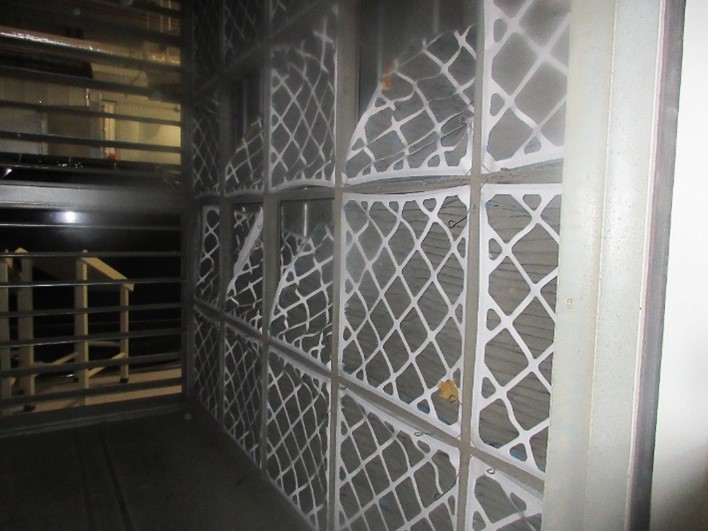
High Energy Consumption: The inefficient filtration system contributed to excessive energy use.
Space Limitations: The AHUs had limited space, hindering any substantial improvements.
Detailed Analysis and Approach:
Westbury’s team conducted a thorough assessment of the existing setup. The findings led to a multi-pronged approach:
Upgrading Pre-Filters: The collapsing filters were replaced with advanced, high-capacity pre-filters, capable of handling greater particulate loads without collapsing.
Innovative Secondary Filtration: A slimline, high-capacity secondary filter was introduced, (Pictured) fitting into the constrained space while significantly improving air quality. This as significant as another manufacturer had told the client this would not be possible. This fact underlines Westbury’s commitment to achieveing what others can or will not.
Improved Mounting Arrangements: The installation of adapted clips facilitates easier maintenance and filter replacement, reducing downtime.
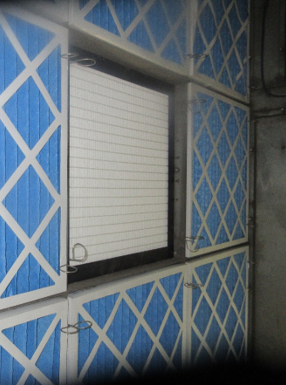
Protective Air Intake Screens: These screens add an extra layer of protection, extending the life of other filters and enhancing overall air quality. Their design allows for easy removal and cleaning.
Implementation Process
Pre-Implementation: The facility struggled with failing panel filters and unprotected air intakes, leading to reduced air quality and a high maintenance requirement.
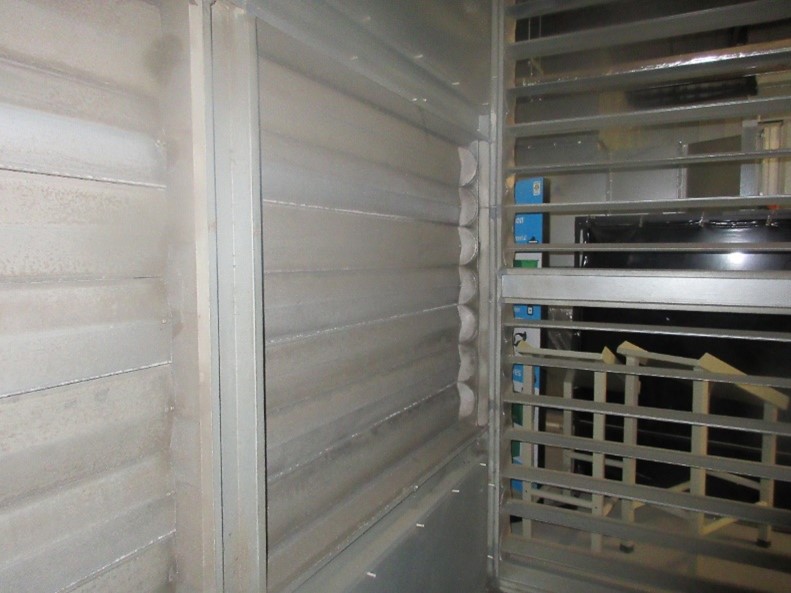
Post-Implementation: Enhanced panel and secondary filters were installed, using existing frames but with intakes, offering additional filtration and prolonging filter life.
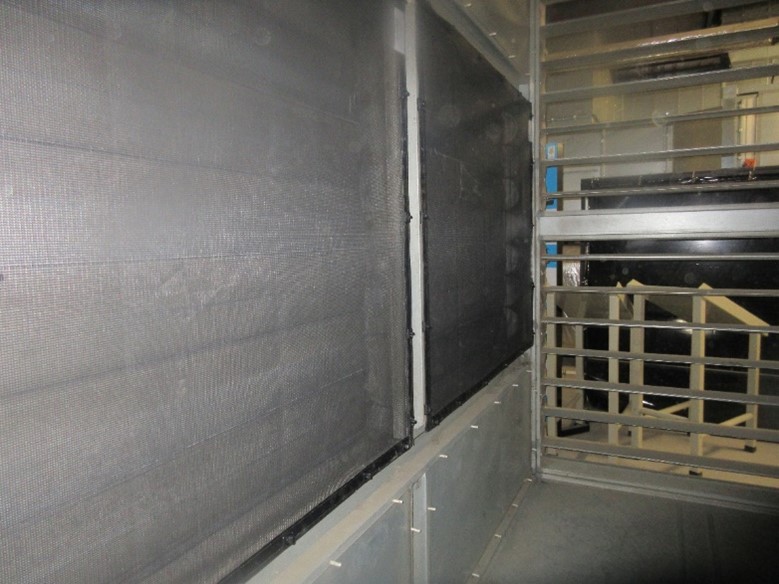
Results and Impact
The implementation led to multiple benefits:
Improved Air Quality: The additional filtration stages significantly improve air quality within the facility.
Reduced Energy: The higher-capacity pre-filters result in lower energy consumption, aligning with sustainability goals.
Ease of Maintenance: The redesign of the mounting system simplifies the process of changing filters, reducing labour and downtime.
Cost-Effective: Using the existing mounting frames avoids the need for expensive AHU modifications.
Following the initial success, the solution was replicated across six more AHUs, leading to a plant-wide improvement in air quality and energy efficiency.
Long-Term Benefits
The project’s success is expected to yield long-term benefits:
Sustained Air Quality Improvements: Enhanced filtration ensures a healthier environment for personnel and better preservation of goods.
Ongoing Energy Savings: The efficient system contributes to reduced operational costs and aligns with environmental sustainability initiatives.
Reduced Maintenance: The ease of filter replacement and the durability of the new system reduce the burden on maintenance teams.
In Conclusion
This example of The Westbury Group’s innovative air filtration project represents a benchmark in environmental and operational excellence. Through a comprehensive approach addressing the challenges of filter collapse, high energy consumption, and space limitations, we not only improved working conditions but also set a precedent for sustainable operations in similar facilities.
Key to this success was the strategic replacement and upgrading of existing filtration systems and the introduction of high-capacity pre-filters, innovative secondary filtration, and protective air intake screens. These enhancements not only improved the hub’s air quality but also streamlined maintenance processes, reducing energy consumption. The use of existing infrastructure mitigated additional costs.
The project’s success extends beyond immediate improvements in air quality and energy efficiency. It demonstrates a proactive approach to employee health and safety, and a commitment to environmental sustainability, aligning with broader global initiatives.
The replication of this solution across additional AHUs within the facility shows both scalability and adaptability, setting a model for other logistics hubs facing similar challenges.
This project is a testament to how innovative engineering solutions can simultaneously address environmental concerns, operational efficiency, and employee well-being across the sector.

The importance of embracing sustainability in all aspects of life is becoming more and more widespread. An area of particular interest is the workplace, where we spend most of our waking hours.
Often taken for granted, the quality of the air we breathe at work plays a pivotal role in ensuring our health and wellbeing. In this article we’ll take a look at how the combination of air filtration and sustainability can contribute to greener and safer working environments for everyone.
Air quality within workspaces extends beyond mere comfort, it directly impacts our health. Poor air quality can lead to allergies and breathing difficulties such as asthma (or worse).
Additionally, it can negatively affect productivity and morale. Fortunately, employers are beginning to acknowledge the significance of clean air in maintaining a happy and healthy working environment.
In simple terms air filtration involves eliminating pollutants and contaminants from the air we breathe. This is accomplished through a combination of filtration methods, along with mechanical and chemical processes.
Mechanical filters effectively trap particles while chemical methods help remove gases and odours.
The effectiveness of an air purification system is often evaluated based on its ability to capture microscopically small particles, including bacteria that are invisible to the naked eye.
When it comes to air purification, sustainability involves using systems and practices that not only effectively clean the air around us but also have a positive environmental impact. This includes considering the energy efficiency of filtration systems, the materials used in filters and the carbon footprint of the entire process.
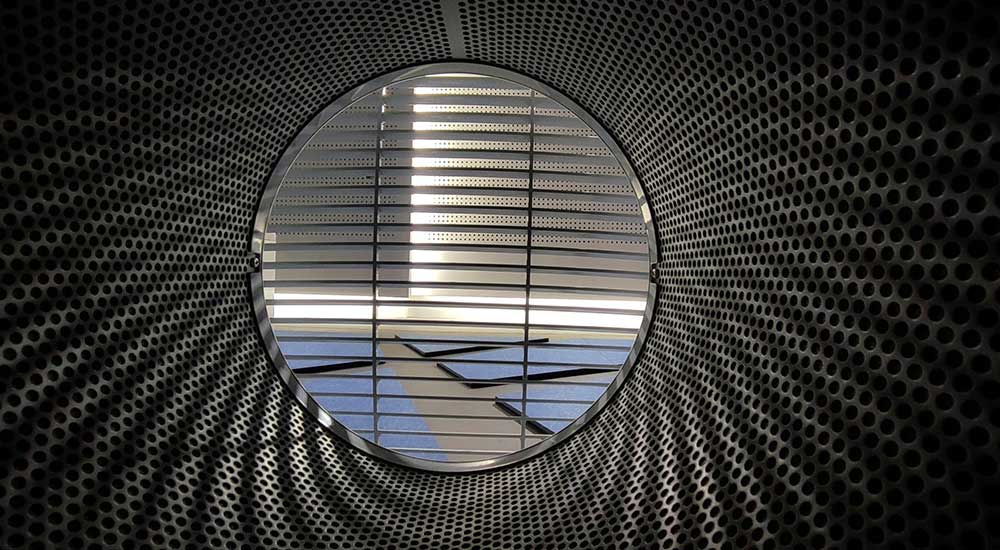
Traditional air filters consume a lot of power and newer technologies are focused on reducing this.
For example, incorporating advanced, more environmentally efficient design into filters can improve functionality, effectively minimising the energy required to move air through the system.
The choice of materials for air filters is crucial for promoting sustainability.
Washable filters are quickly gaining popularity as they reduce waste and eliminate the need for new replacements. Moreover, there are now filters made from recycled materials, cutting costs, and improving efficiency.
The benefits of implementing them are clear. Firstly, they promote health, leading to reduced illness rates and increased productivity.
Secondly, they reflect a commitment to responsibility, which can enhance your company reputation. Energy efficient systems also result in cost savings, allowing you to reap the rewards of your new sustainable practice.
While the advantages are obvious, optimising air filtration systems can present challenges. The installation costs for systems can be high and there may be a need for staff training. Finding the right balance requires careful consideration and planning.
This of course takes time but it’s indisputable this investment pays rich dividends.
Looking towards the future of air filtration there is a clear trend favouring more sustainable and efficient systems.
With the increasing awareness of concerns, regulatory bodies may enforce more robust standards for air quality and sustainability in workplaces.
Westbury, as industry leaders in air filtration technology, keep a constant watch on such developments and are ready and able to comply with changes in sustainability regulation.
Incorporating sustainability into air filtration is becoming a major factor when choosing a supplier. By investing in environmentally friendly air filtration, companies can not only save money by enhancing the wellbeing and productivity of their employees but also contribute to the bigger picture of environmental sustainability.
As technology continues to advance, we can anticipate even more innovative solutions in this area, further improving our life at work and the overall health of our planet.
In today’s fast-paced workplaces, amidst pressing deadlines and high productivity, one critical element often goes unnoticed – the quality of the air we breathe.
Although it might not be as noticeable as office equipment and decor, the air we inhale within our workplaces plays a pivotal role in our health, well-being, and overall productivity. This fundamental aspect, often overlooked, is a core facet of Facilities Management.
In this article, we uncover the significance of air handling in the workplace, looking at how it affects not only the physical health of employees but also the efficiency and sustainability of businesses. Through this exploration, we shed light on the pivotal role that Facilities Management and advanced air filtration solutions play in cultivating healthier and more productive work environments.
Proper air handling is far more than just a technicality in workplace management – it’s a fundamental pillar upon which the health and productivity of employees stand.
Air handling is a multifaceted process integral to various industries, involving the movement, distribution, and regulation of indoor and outdoor air. It encompasses ventilation, heating, cooling, filtration, humidification, dehumidification, and control of air quality. This comprehensive approach ensures that the air within a specific environment is of high quality, maintaining optimal conditions for the occupants or processes within that space.
This complex system of air handling caters to different industries in distinct ways, shaping their environments and operations in a variety of customised approaches.
Healthcare Industry
In healthcare facilities, air handling systems are vital for maintaining sterile environments and preventing the spread of infections. Proper ventilation and air filtration are crucial in places like hospitals, clinics, and laboratories, where patients, staff, and sensitive equipment are highly susceptible to airborne contaminants. Air handling systems help control pathogens and maintain a safe atmosphere for both patients and healthcare professionals.
Manufacturing and Industrial Sector
Industries relying on precision and consistency, such as electronics, pharmaceuticals, and food processing, require controlled environments. Air handling systems play a pivotal role by regulating temperature and humidity, ensuring dust and contaminants are filtered out. This is vital for maintaining the quality of products and preventing equipment damage, especially in cleanrooms and manufacturing facilities where even microscopic particles can disrupt processes.
Commercial Buildings
Air handling systems in offices, shopping centres, hotels, and other commercial spaces enhance the comfort and well-being of occupants. They regulate temperature, control humidity, and filter pollutants, ensuring a pleasant atmosphere. Energy-efficient systems not only create a better environment but also contribute to cost savings for businesses.
Education Sector
Schools, colleges, and universities benefit from efficient air handling systems to create conducive learning environments. Proper ventilation and air quality contribute to the health of students and staff, creating an atmosphere better suited for concentration and academic performance.

Data Centres
Data centres, housing sensitive electronic equipment, rely heavily on precise air handling. Maintaining an optimal temperature and humidity level is critical to prevent overheating and equipment failures. Air filtration systems are employed to keep out dust and contaminants, ensuring the continuous and reliable operation of servers and networking devices.
Hospitality Industry
Hotels and restaurants utilise air handling systems to maintain a pleasant atmosphere for guests. Proper ventilation and air filtration enhance the overall experience, ensuring that guests are comfortable and safe from allergens and pollutants.
By tailoring these systems to specific industry requirements, businesses can create environments that are conducive to health, productivity, and the overall success of their operations.
Poor air quality in workplaces goes beyond being a minor inconvenience; it profoundly affects employees’ health. Exposure to indoor pollutants like dust and pollen can cause allergies, asthma, and chronic respiratory issues. Allergies often lead to common symptoms such as sneezing and watery eyes. Inadequate ventilation hampers cognitive functions, impacting concentration and causing fatigue and memory problems. Long-term exposure increases the risk of severe illnesses like respiratory diseases. Uncomfortable air quality also elevates stress levels, affecting emotional well-being and job satisfaction.
Recognising these risks highlights the crucial need for proper air handling systems and effective filtration. Investing in clean indoor air isn’t just about health; it’s the foundation for a productive workforce, creating environments where individuals can thrive both personally and professionally.
Indoor air pollution is a complex issue influenced by various factors. Understanding the common pollutants and their sources is essential for mitigating health risks and ensuring a healthy indoor environment. Here are some prevalent indoor air pollutants and where they originate:
Particulate Matter (PM2.5 and PM10)
Sources: Dust, pollen, pet dander, mould spores, and particles from cooking and tobacco smoke.
Health Impact: Respiratory problems, allergies, and aggravation of pre-existing conditions.
PM1
Sources: Tobacco smoke, fireplaces, burning candles, frying foods.
Health Impact: Cardiovascular and respiratory effects.
Volatile Organic Compounds (VOCS)
Sources: Cleaning products, paints, varnishes, disinfectants, air fresheners, and office equipment like printers and copiers.
Health Impact: Eye, nose, and throat irritation, headaches, dizziness, and long-term exposure can cause damage to organs.
Carbon Monoxide (CO)
Sources: Incomplete combustion from gas stoves, heating systems, tobacco smoke, and car exhaust in enclosed spaces.
Health Impact: Headaches, dizziness, nausea, and, in severe cases, can be fatal.
Formaldehye
Sources: Furniture, carpets, particleboard, plywood, and some cleaning products.
Health Impact: Eye, nose, and throat irritation, allergies, and potential carcinogenic effects with prolonged exposure.
Radon
Sources: Soil under buildings, especially in areas with high uranium content in the ground.
Health Impact: Lung cancer; radon is the second leading cause of lung cancer after smoking.
Mould and Mildew
Sources: Dampness, water leaks, and high humidity provide ideal conditions for mould growth on walls, ceilings, and carpets.
Health Impact: Allergies, respiratory issues, and irritation of eyes, nose, and throat.
Tobacco Smoke
Sources: Smoking indoors releases thousands of harmful chemicals into the air.
Health Impact: Respiratory problems, increased risk of cancer, especially for passive smokers (non-smokers exposed to smoke). Identifying and minimising exposure to these pollutants is crucial for maintaining a healthy indoor environment. Proper ventilation, regular cleaning, and using HEPA filters where appropriate, can significantly reduce indoor air pollution and its associated health risks.
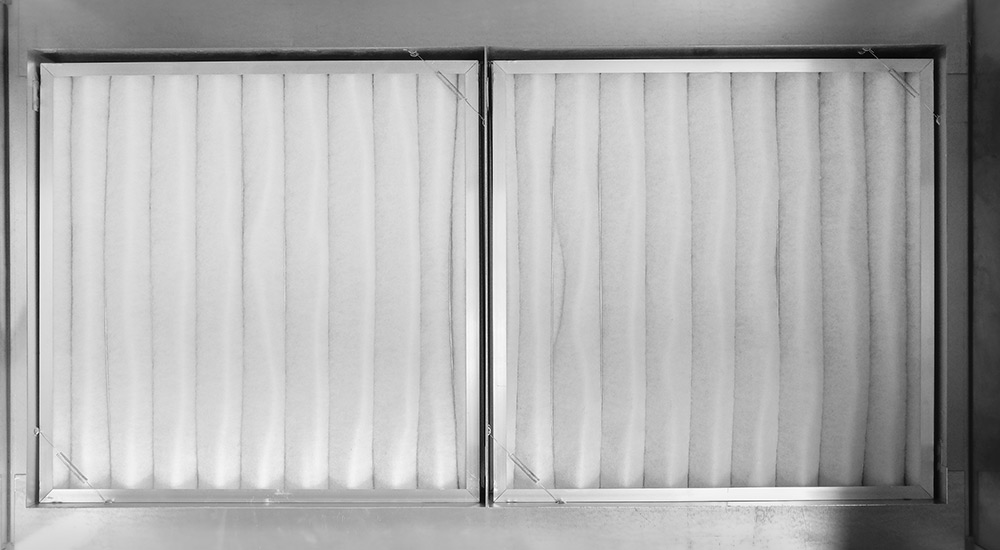
Facilities management is the multidisciplinary approach to ensuring the functionality, safety, comfort, and efficiency of the built environment – encompassing everything from buildings and infrastructure to people and processes. It involves integrating people, place, process, and technology to optimise the functionality of an organisation. At its core, facilities management strives to create an environment that strategically aligns with the organisation’s objectives while providing a safe and productive space for its occupants.
At the heart of facilities management lies the vital responsibility of managing indoor air quality through effective air handling systems. The connection between facilities management and air handling is paramount, especially in environments where the health and well-being of occupants are non-negotiable, such as healthcare facilities, commercial spaces, educational institutions, and industrial complexes. Facilities managers play a pivotal role in ensuring that indoor air quality meets required standards, creating an environment conducive to the health and productivity of the occupants.
Facilities managers play a central role in air handling, collaborating with HVAC specialists to design tailored systems based on building requirements. They oversee regular maintenance, ensuring filters, fans, and ducts are functioning optimally. Utilising advanced monitoring technologies, they track air quality parameters and adjust ventilation and filtration processes as needed. Additionally, managers stay updated on regulations and standards, ensuring compliance for a healthy indoor environment.
Implementing proper air handling and filtration systems not only ensures a healthier workplace but also translates into substantial cost savings for businesses. By efficiently regulating indoor air quality, companies reduce the risk of employee sick days, increase productivity, and enhance overall workforce well-being.
Well-maintained filtration systems significantly prolong the lifespan of equipment and reduce energy consumption by optimising ventilation. Lower maintenance costs, reduced energy bills, and enhanced productivity collectively contribute to substantial financial savings in the long run.
Proper air handling isn’t just an investment in health; it’s a strategic move that pays dividends by fostering a healthier bottom line for businesses.
With a rich history dating back to 1969, Westbury is an industry leader in the field of air filtration.
What sets Westbury apart is our customised approach to solving air quality challenges across diverse industries through our expertise in ventilation engineering. Our tailored solutions address these specific needs, offering businesses not just generic products, but precisely engineered systems.
By analysing the distinct demands of each industry, we deliver solutions that ensure optimal air quality and safety, with a commitment to client satisfaction.
For further advice on how filter test standards have evolved and for a clear & honest conversation about the points discussed above, contact Westbury today.